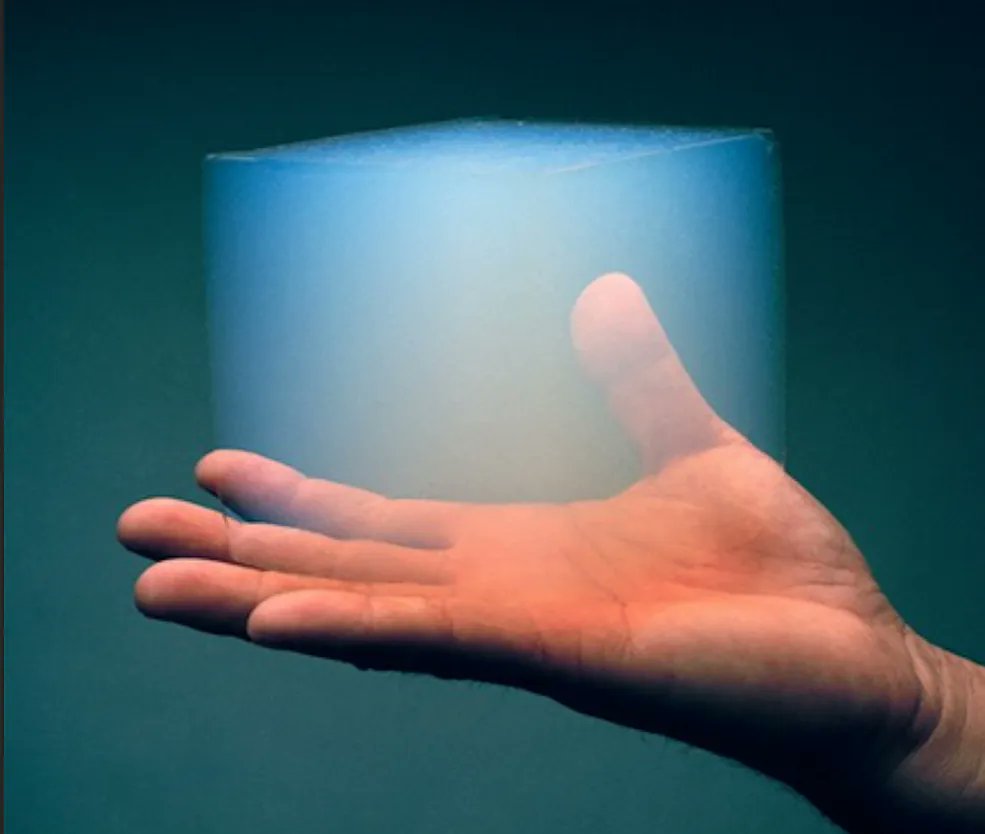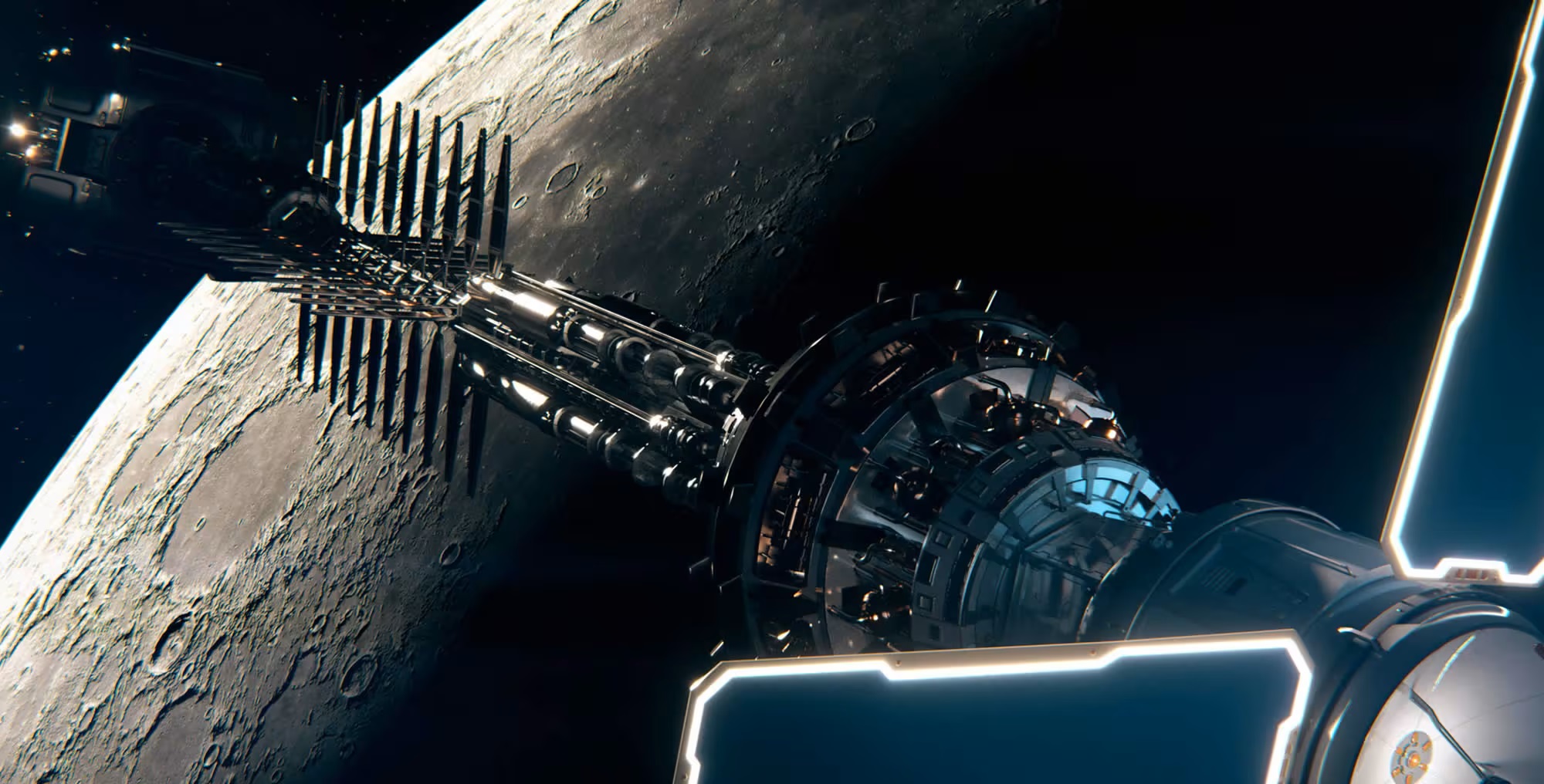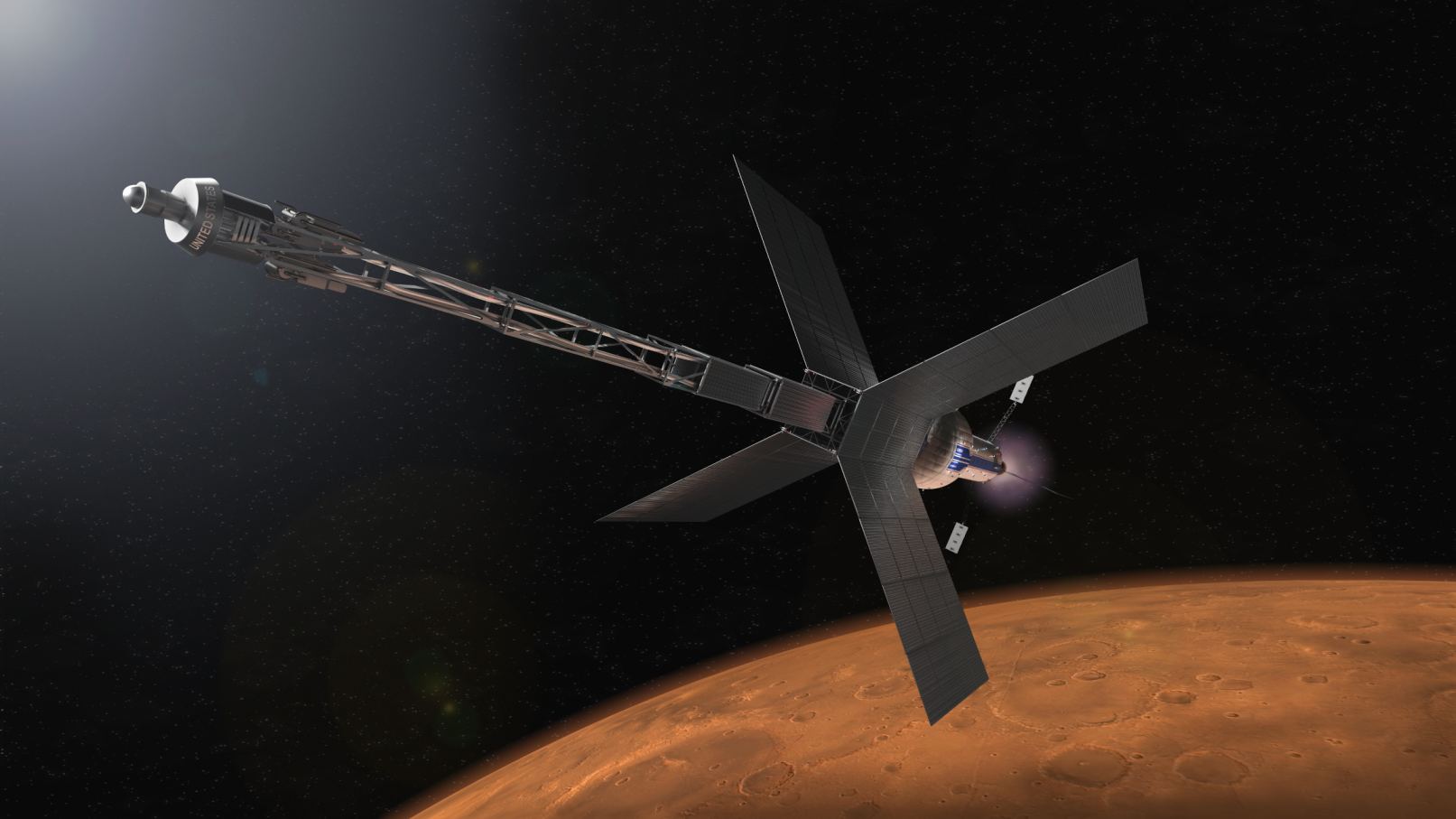Novel propulsion ideas for moving around space seem like they’re a dime a dozen recently. Besides the typical argument between solar sails and chemical propulsion lies a potential third way – a nuclear rocket engine. While we’ve discussed them here at UT before, NASA’s Institute of Advanced Concepts has provided a grant to a company called Positron Dynamics for the development of a novel type of nuclear fission fragment rocket engine (FFRE). It could strike the balance between the horsepower of chemical engines and the longevity of solar sails.
Continue reading “An Extremely Lightweight Fission Rocket Could Reach the Solar Gravitational Lens in 15 Years”Rolls-Royce Reveals a Nuclear Reactor That Could Provide Power on the Moon
For space agencies and the commercial space industry, the priorities of the next two decades are clear. First, astronauts will be sent to the Moon for the first time since the Apollo Era, followed by the creation of permanent infrastructure that will allow them to say there for extended periods. Then, the first crewed missions will be sent to Mars, with follow-up missions every 26 months, culminating in the creation of surface habitats (and maybe a permanent base). To meet these objectives, space agencies are investigating next-generation propulsion, power, and life support systems.
This includes solar-electric propulsion (SEP), where solar energy is used to power extremely fuel-efficient Hall-Effect thrusters. Similarly, they are looking into nuclear thermal propulsion (NTP) and compact nuclear reactors, allowing for shorter transit times and providing a steady power supply for Lunar and Martian habitats. Beyond NASA, the UK Space Agency (UKSA) has partnered with Rolls-Royce to develop nuclear systems for space exploration. In a recent tweet, the international auto and aerospace giant provided a teaser of what their “micro-reactor” will look like.
Continue reading “Rolls-Royce Reveals a Nuclear Reactor That Could Provide Power on the Moon”NASA and DARPA Will be Testing a Nuclear Rocket in Space
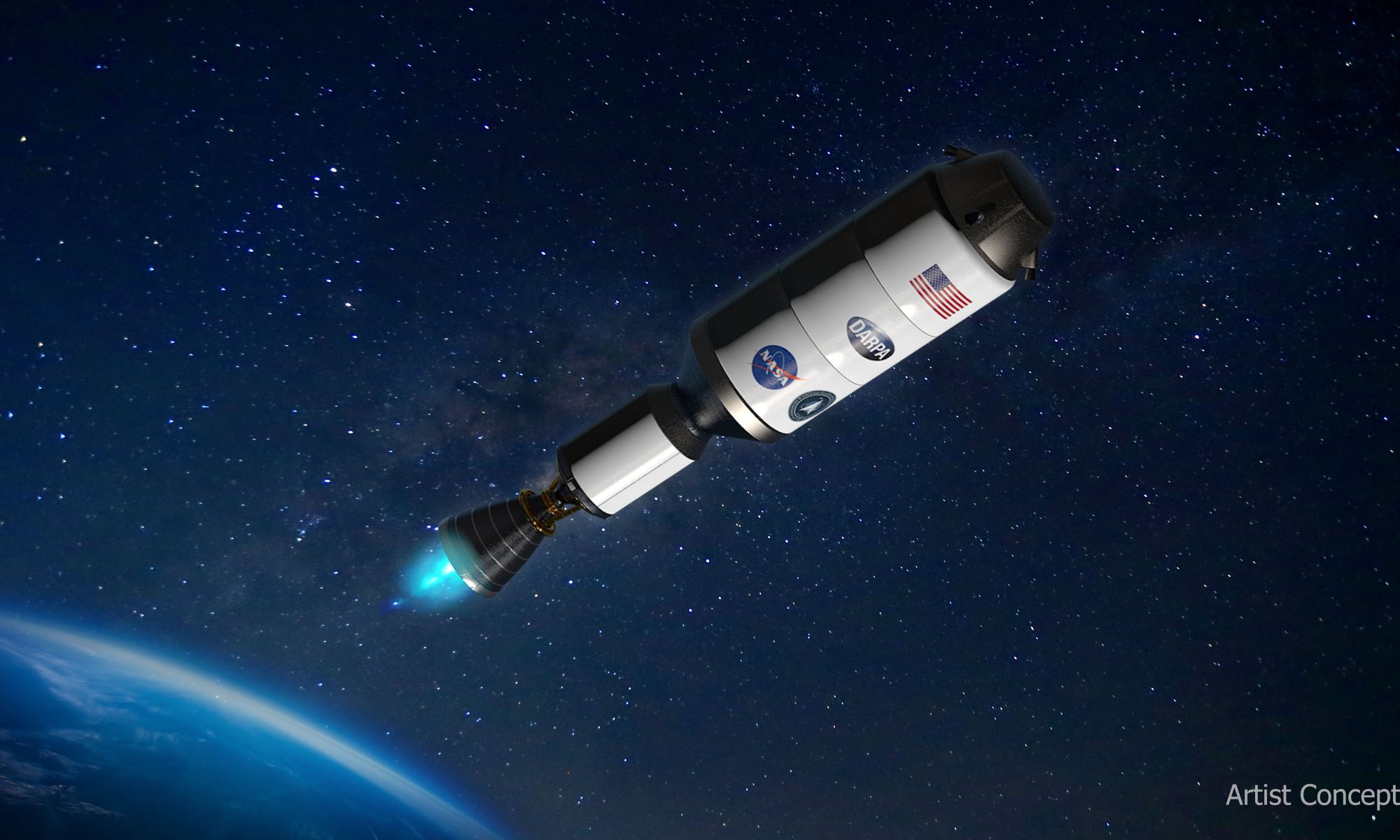
The coming decades of space exploration will see astronauts return to the Moon, the first crewed missions to Mars, and robotic missions to the outer Solar System (among other things). These missions will leverage innovative technologies that allow faster transits, long-duration stays, and sustainable living far from Earth. To this end, NASA and other space agencies are investigating nuclear applications, especially where energy and propulsion are concerned. Many of these proposals have been on the books since the early space age and have been thoroughly validated.
On Tuesday, January 24th, NASA and the Defense Advanced Research Projects Agency (DARPA) announced they were launching an interagency agreement to develop a nuclear-thermal propulsion (NTP) concept. The proposed nuclear rocket is known as the Demonstration Rocket for Agile Cislunar Operations (DRACO), which would enable fast-transit missions to Mars (weeks instead of months). This three-phase program will culminate with a demonstration of the DRACO in orbit, which is expected to occur by early 2027.
Continue reading “NASA and DARPA Will be Testing a Nuclear Rocket in Space”New Nuclear Rocket Design to Send Missions to Mars in Just 45 Days
We live in an era of renewed space exploration, where multiple agencies are planning to send astronauts to the Moon in the coming years. This will be followed in the next decade with crewed missions to Mars by NASA and China, who may be joined by other nations before long. These and other missions that will take astronauts beyond Low Earth Orbit (LEO) and the Earth-Moon system require new technologies, ranging from life support and radiation shielding to power and propulsion. And when it comes to the latter, Nuclear Thermal and Nuclear Electric Propulsion (NTP/NEP) is a top contender!
NASA and the Soviet space program spent decades researching nuclear propulsion during the Space Race. A few years ago, NASA reignited its nuclear program for the purpose of developing bimodal nuclear propulsion – a two-part system consisting of an NTP and NEP element – that could enable transits to Mars in 100 days. As part of the NASA Innovative Advanced Concepts (NIAC) program for 2023, NASA selected a nuclear concept for Phase I development. This new class of bimodal nuclear propulsion system uses a “wave rotor topping cycle” and could reduce transit times to Mars to just 45 days.
Continue reading “New Nuclear Rocket Design to Send Missions to Mars in Just 45 Days”New Calculations Show That an Interstellar Bussard Ramjet Drive Would Need a Magnetic Field Stretching 150 Million Kilometres
In the 1960s, American physicist Robert W. Bussard proposed a radical idea for interstellar travel: a spacecraft that relied on powerful magnetic fields to harvest hydrogen directly from the interstellar medium. The high speed of this “ramjet” forces the hydrogen into a progressively constricted magnetic field until fusion occurs. The magnetic field then directs the resulting energy towards the rear of the spacecraft to generate propulsion.
As it’s come to be known, the Bussard Ramjet has since been popularized by hard science fiction writers like Poul Anderson, Larry Niven, Vernor Vinge, and science communicators like Carl Sagan. Unfortunately, a team of physicists recently analyzed the concept in more detail and concluded that Bussard’s idea is not practical. At a time when interstellar travel looks destined to become a real possibility, this analysis might seem like a wet blanket but is more of a reality check.
Continue reading “New Calculations Show That an Interstellar Bussard Ramjet Drive Would Need a Magnetic Field Stretching 150 Million Kilometres”NASA is Building a Nuclear Reactor to Power Lunar and Martian Exploration!
Over the next fifteen years, multiple space agencies and their commercial partners intend to mount crewed missions to the Moon and Mars. In addition to placing “footprints and flags” on these celestial bodies, there are plans to establish the infrastructure to allow for a long-term human presence. To meet these mission requirements and ensure astronaut safety, several technologies are currently being researched and developed.
At their core, these technologies are all about achieving self-sufficiency in terms of resources, materials, and energy. To ensure that these missions have all the energy they need to conduct operations, NASA is developing a Fission Surface Power (FSP) system that will provide a safe, efficient, and reliable electricity supply. In conjunction with solar cells, batteries, and fuel cells, this technology will allow for long-term missions to the Moon and Mars in the near future.
Continue reading “NASA is Building a Nuclear Reactor to Power Lunar and Martian Exploration!”White House Encourages NASA to Work on Space-Based Nuclear Power and Propulsion Systems
In what’s likely to be one of the last space policy initiatives of his administration, President Donald Trump has issued a directive that lays out a roadmap for nuclear power applications beyond Earth.
Space Policy Directive 6, released on December 16th, calls on NASA and other federal agencies to advance the development of in-space nuclear propulsion systems as well as a nuclear fission power system on the Moon.
“Space nuclear power and propulsion is a fundamentally enabling technology for American deep space missions to Mars and beyond,” Scott Pace, the executive secretary of the National Space Council, said in a White House news release. “The United States intends to remain the leader among spacefaring nations, applying nuclear power technology safely, securely and sustainably in space.”
Continue reading “White House Encourages NASA to Work on Space-Based Nuclear Power and Propulsion Systems”NASA Reignites Program for Nuclear Thermal Rockets
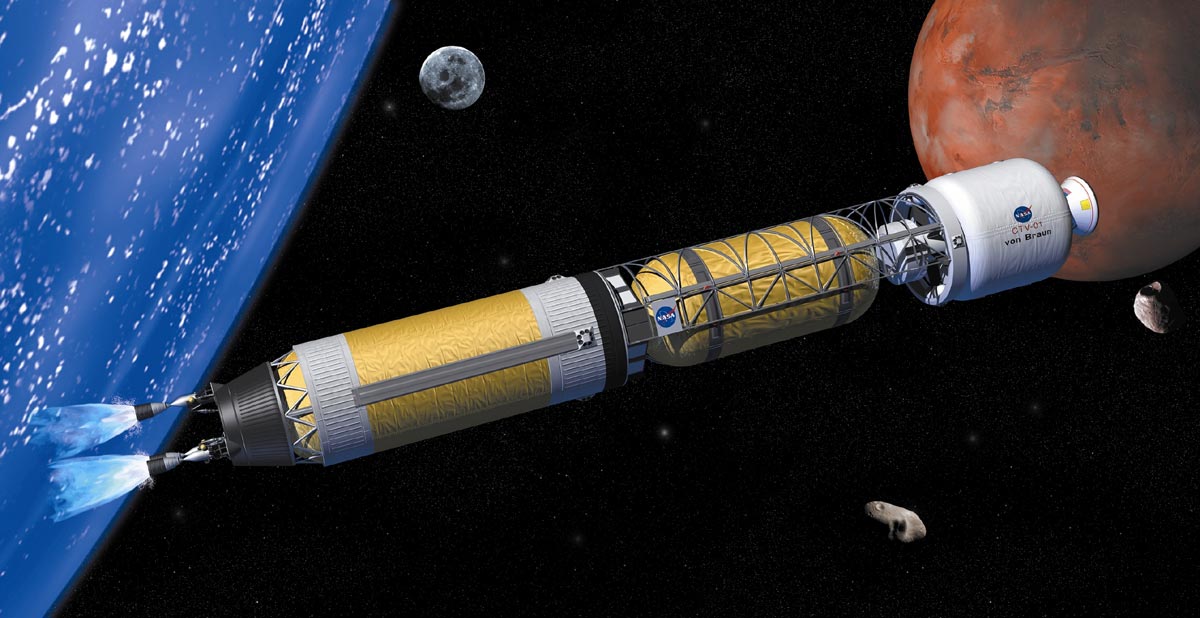
In its pursuit of missions that will take us back to the Moon, to Mars, and beyond, NASA has been exploring a number of next-generation propulsion concepts. Whereas existing concepts have their advantages – chemical rockets have high energy density and ion engines are very fuel-efficient – our hopes for the future hinge on us finding alternatives that combine efficiency and power.
To this end, researchers at NASA’s Marshall Space Flight Center are once again looking to develop nuclear rockets. As part of NASA’s Game Changing Development Program, the Nuclear Thermal Propulsion (NTP) project would see the creation of high-efficiency spacecraft that would be capable of using less fuel to deliver heavy payloads to distant planets, and in a relatively short amount of time.
As Sonny Mitchell, the project of the NTP project at NASA’s Marshall Space Flight Center, said in a recent NASA press statement:
“As we push out into the solar system, nuclear propulsion may offer the only truly viable technology option to extend human reach to the surface of Mars and to worlds beyond. We’re excited to be working on technologies that could open up deep space for human exploration.”
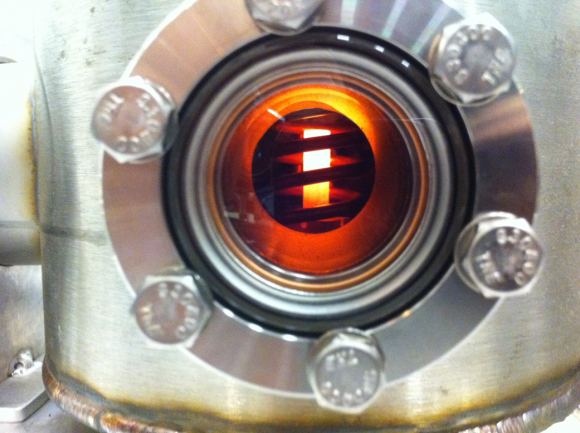
To see this through, NASA has entered into a partnership with BWX Technologies (BWXT), a Virginia-based energy and technology company that is a leading supplier of nuclear components and fuel to the U.S. government. To assist NASA in developing the necessary reactors that would support possible future crewed missions to Mars, the company’s subsidiary (BWXT Nuclear Energy, Inc.) was awarded a three-year contract worth $18.8 million.
During this three years in which they will be working with NASA, BWXT will provide the technical and programmatic data needed to implement NTP technology. This will consist of them manufacturing and testing prototype fuel elements and helping NASA to resolve any nuclear licensing and regulatory requirements. BWXT will also aid NASA planners in addressing the issues of feasibility and affordably with their NTP program.
As Rex D. Geveden, BWXT’s President and Chief Executive Officer, said of the agreement:
“BWXT is extremely pleased to be working with NASA on this exciting nuclear space program in support of the Mars mission. We are uniquely qualified to design, develop and manufacture the reactor and fuel for a nuclear-powered spacecraft. This is an opportune time to pivot our capabilities into the space market where we see long-term growth opportunities in nuclear propulsion and nuclear surface power.”
In an NTP rocket, uranium or deuterium reactions are used to heat liquid hydrogen inside a reactor, turning it into ionized hydrogen gas (plasma), which is then channeled through a rocket nozzle to generate thrust. A second possible method, known as Nuclear Electric Propulsion (NEC), involves the same basic reactor converted its heat and energy into electrical energy which then powers an electrical engine.
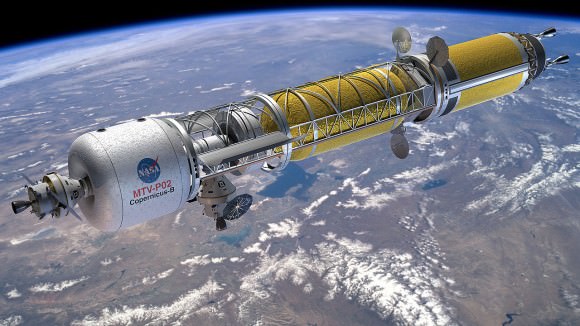
In both cases, the rocket relies on nuclear fission to generates propulsion rather than chemical propellants, which has been the mainstay of NASA and all other space agencies to date. Compared to this traditional form of propulsion, both types of nuclear engines offers a number of advantages. The first and most obvious is the virtually unlimited energy density it offers compared to rocket fuel.
This would cut the total amount of propellant needed, thus cutting launch weight and the cost of individual missions. A more powerful nuclear engine would mean reduced trip times. Already, NASA has estimated that an NTP system could make the voyage to Mars to four months instead of six, which would reduce the amount of radiation the astronauts would be exposed to in the course of their journey.
To be fair, the concept of using nuclear rockets to explore the Universe is not new. In fact, NASA has explored the possibility of nuclear propulsion extensively under the Space Nuclear Propulsion Office. In fact, between 1959 and 1972, the SNPO conducted 23 reactor tests at the Nuclear Rocket Development Station at AEC’s Nevada Test Site, in Jackass Flats, Nevada.
In 1963, the SNPO also created the Nuclear Engine for Rocket Vehicle Applications (NERVA) program to develop nuclear-thermal propulsion for long-range crewed mission to the Moon and interplanetary space. This led to the creation of the NRX/XE, a nuclear-thermal engine which the SNPO certified as having met the requirements for a crewed mission to Mars.

The Soviet Union conducted similar studies during the 1960s, hoping to use them on the upper stages of of their N-1 rocket. Despite these efforts, no nuclear rockets ever entered service, owing to a combination of budget cuts, loss of public interest, and a general winding down of the Space Race after the Apollo program was complete.
But given the current interest in space exploration, and ambitious mission proposed to Mars and beyond, it seems that nuclear rockets may finally see service. One popular idea that is being considered is a multistage rocket that would rely on both a nuclear engine and conventional thrusters – a concept known as a “bimodal spacecraft”. A major proponent of this idea is Dr. Michael G. Houts of the NASA Marshall Space Flight Center.
In 2014, Dr. Houts conducted a presentation outlining how bimodal rockets (and other nuclear concepts) represented “game-changing technologies for space exploration”. As an example, he explained how the Space Launch System (SLS) – a key technology in NASA’s proposed crewed mission to Mars – could be equipped with chemical rocket in the lower stage and a nuclear-thermal engine on the upper stage.
In this setup, the nuclear engine would remain “cold” until the rocket had achieved orbit, at which point the upper stage would be deployed and the reactor would be activated to generate thrust. Other examples cited in the report include long-range satellites that could explore the Outer Solar System and Kuiper Belt and fast, efficient transportation for manned missions throughout the Solar System.
The company’s new contract is expected to run through Sept. 30th, 2019. At that time, the Nuclear Thermal Propulsion project will determine the feasibility of using low-enriched uranium fuel. After that, the project then will spend a year testing and refining its ability to manufacture the necessary fuel elements. If all goes well, we can expect that NASA’s “Journey to Mars” might just incorporate some nuclear engines!

